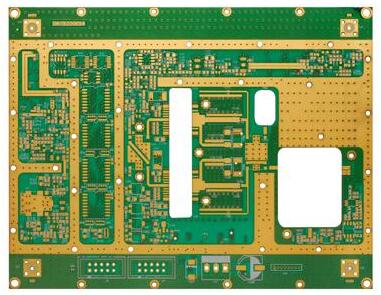The electronic smt chip processing process is to purchase, process and inspect materials, perform curing and reflow soldering, etc. It should be noted that the solder paste cannot be stored below zero, and the equipment must be checked regularly. Next, I would like to introduce the electronic smt patch processing process. What are the precautions?
One, electronic smt patch processing flow
1. Material procurement, processing and inspection
The material purchaser carries out the original purchase of materials according to the BOM list provided by the customer to ensure that the production is basically correct. After the purchase is completed, material inspection and processing are carried out, such as pin header cutting, resistance pin forming and so on. Inspection is to better ensure the quality of production. Nuo's electronic material procurement is supplied by specialized suppliers, and the upstream and downstream procurement lines are complete and mature.

2. SMT silk screen
SMT screen printing, that is, screen printing, is the first step of the SMT processing process. Silk screen refers to the solder paste or patch glue being printed on the PCB pads to prepare for the soldering of components. With the aid of a solder paste printer, the solder paste is penetrated through the stainless steel or nickel steel mesh and attached to the pad. If the stencil used for silk screen printing is not provided by the customer, the processor needs to make it according to the stencil file. At the same time, since the solder paste used must be stored frozen, the solder paste needs to be thawed to a suitable temperature in advance. The thickness of the solder paste printing is also related to the squeegee, and the thickness of the solder paste printing should be adjusted according to the PCB processing requirements.
3. Dispensing
Generally in SMT processing, the glue used for dispensing is red glue. Drop the red glue on the PCB position to fix the components to be soldered and prevent electronic components from falling due to their own weight or unfixed during the reflow soldering process. Falling or weak welding. Dispensing can be divided into manual dispensing or automatic dispensing, which is confirmed according to process requirements.
4. SMT placement
The placement machine can quickly and accurately mount the SMC/SMD components to the specified pad positions on the PCB board without damaging the components and the printed circuit board through the functions of suction-displacement-positioning-placement. . Mounting is generally located before reflow soldering.
5. Curing
Curing is to melt the patch glue and fix the surface mount components on the PCB pads. Generally, heat curing is used.
6. Reflow soldering
Reflow soldering is to remelt the solder paste pre-distributed on the printed board pads to realize the mechanical and electrical connection between the solder ends or pins of the surface mount components and the printed board pads. It mainly relies on the effect of hot air flow on the solder joints. The colloidal flux undergoes a physical reaction under a certain high temperature air flow to achieve SMD welding.
7. Cleaning
After the soldering process is completed, the board surface needs to be cleaned to remove the rosin flux and some solder balls to prevent them from causing short circuits between components. Cleaning is to place the soldered PCB board in a cleaning machine to remove the flux residue on the surface of the PCB assembly board that is harmful to the human body or the flux residue after reflow soldering and manual soldering, as well as the contaminants caused during the assembly process.
8. Detection
Inspection is to conduct welding quality inspection and assembly quality inspection on the assembled PCB assembly board. Need to use AOI optical inspection, flying probe tester and perform ICT and FCT function test. The QC team conducts random inspections of PCB board quality, inspects substrates, flux residues, assembly failures, etc.
2. Precautions for electronic smt patch processing
1. When performing smt patch processing, everyone knows that solder paste is basically applied. For the newly purchased solder paste, if it is not applied immediately, the SMT factory needs to store it in an environment of 5-10 degrees, so as not to affect the application of the solder paste. In a zero degree environment, it will not work if it is higher than 10 degrees.
2. In the placement process, the placement machine equipment must be checked regularly. If the SMT factory equipment is aging or some components are damaged, in order to ensure that the placement will not be crooked, In the event of high dumping, the equipment needs to be repaired or replaced with new equipment in time. Only in this way can production costs be reduced and production efficiency improved.
3. When performing smt processing, if you want to ensure the quality of PCBA processing and soldering, you need to pay attention to whether the setting of reflow soldering process technical parameters is more reasonable. If there is a problem with the parameter setting, SMT patch soldering The quality cannot be guaranteed. Therefore, under normal circumstances, the furnace temperature needs to be tested twice a day, at least once.